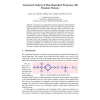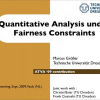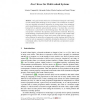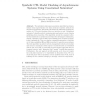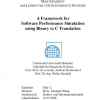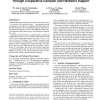ATVA
2009
Springer
14 years 7 months ago
2009
Springer
Weakly relational numeric domains express restricted classes of linear inequalities that strike a balance between what can be described and what can be efficiently computed. Popula...
ATVA
2009
Springer
14 years 7 months ago
2009
Springer
We present a data symmetry reduction approach for model temporal-epistemic logic. The technique abstracts the epistemic indistinguishably relation for the knowledge operators, and ...
ATVA
2009
Springer
14 years 7 months ago
2009
Springer
We present a new approach for automatic verification of data-dependent programs manipulating dynamic heaps. A heap is encoded by a graph where the nodes represent the cells, and t...
ATVA
2009
Springer
14 years 7 months ago
2009
Springer
ATVA
2009
Springer
14 years 7 months ago
2009
Springer
This paper studies abstraction and refinement techniques in the setting of multi-valued model checking for the μ-calculus. Two dimensions of abstrace identified and studied: Abs...
ATVA
2009
Springer
14 years 7 months ago
2009
Springer
Abstract. The saturation state-space generation algorithm has demonstrated clear improvements over state-of-the-art symbolic methods for asynchronous systems. This work is motivate...
PACCS
2009
IEEE
14 years 7 months ago
2009
IEEE
MICRO
2009
IEEE
14 years 7 months ago
2009
IEEE
Performance and power are the first order design metrics for Network-on-Chips (NoCs) that have become the de-facto standard in providing scalable communication backbones for mult...
MICRO
2009
IEEE
14 years 7 months ago
2009
IEEE
A platform that supported Sequential Consistency (SC) for all codes — not only the well-synchronized ones — would simplify the task of programmers. Recently, several hardware ...
MICRO
2009
IEEE
14 years 7 months ago
2009
IEEE
The phase-change random access memory (PRAM) technology is fast maturing to production levels. Main advantages of PRAM are non-volatility, byte addressability, in-place programmab...

